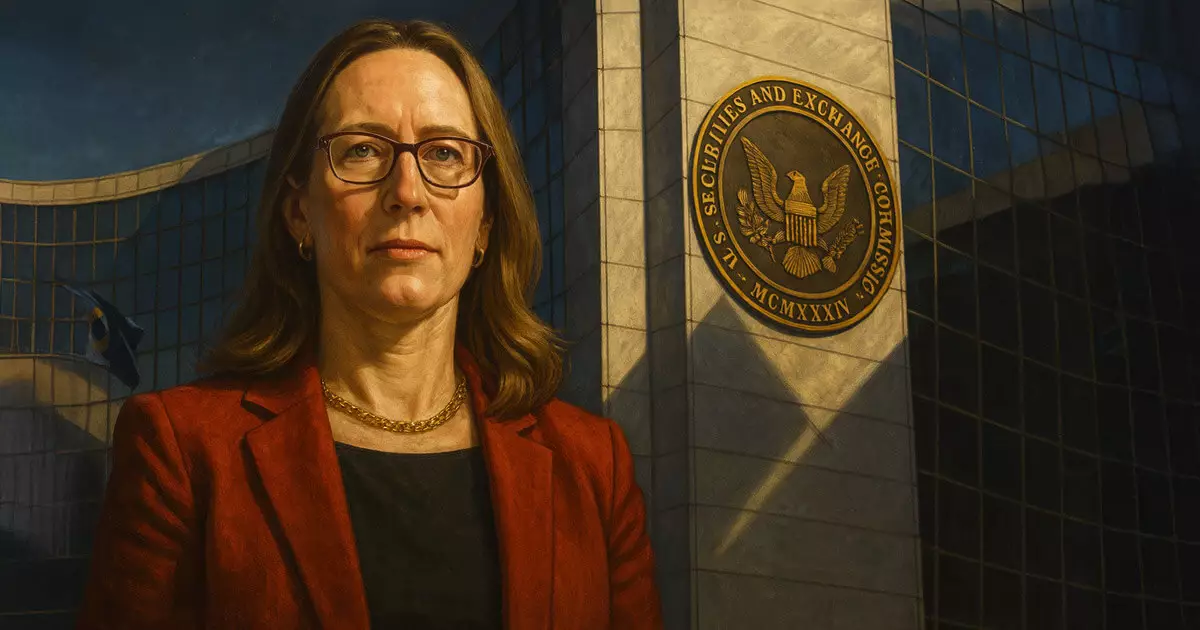The recent announcement by the U.S. Securities and Exchange Commission (SEC) to expand its crypto roundtables and conduct a nationwide outreach reflects a significant shift in how regulatory bodies perceive digital assets. While on the surface, this initiative can be seen as an effort to democratize dialogue and gather grassroots insights, it also signals a deeper, more centralized form of control that risks stifling innovation. Moving beyond Washington D.C., into cities like Berkeley, Boston, and Dallas, the SEC aims to loudspeaker a message that it is taking the pulse of the actual developers, entrepreneurs, and users in the trenches. Yet, this push for outreach appears to be driven more by a desire for oversight than genuine engagement, effectively turning the process into a gatekeeping exercise cloaked in transparency.
The “Crypto on the Road” tour promises to create opportunities for small teams to voice concerns and share innovations, especially those under ten employees and less than two years old. However, what seems to be portrayed as inclusive outreach could, in practice, become an indirect licensing or approval process, where startups are subtly coerced into self-censorship or compliance ahead of any concrete regulation. The SEC’s approach seems to prioritize control over clarity, risking a regulatory environment that favors legacy financial institutions and well-established stakeholders rather than fostering genuine innovation from the grassroots.
Is the SEC Truly Listening or Setting Precedents?
While SEC Chair Gary Gensler portrays these sessions as essential for comprehensive regulation, critics may view this as an exercise in preemptive regulation rather than participatory policymaking. The fact that the agency is publishing lists of participating projects might give the appearance of transparency, but it could also serve as a way for regulators to monitor emerging ideas more effectively. This practice raises questions about whether the SEC is genuinely interested in fostering open dialogue or simply cataloging projects to better understand how to regulate or even smother them.
Furthermore, the movement into regional cities—once again—suggests a strategy to collect diverse perspectives, but it could also be an effort to anticipate key objections and craft regulations that favor traditional financial powers. There’s a sense that these outreach sessions will serve as a platform for regulatory elites to gauge where the political winds are blowing rather than offering meaningful, balanced insights from the industry. In this light, the SEC’s strategy may be less about hearing diverse voices and more about consolidating control over a disruptive industry that challenges existing power structures.
Regulatory Ambiguity as a Strategic Tool
The debate about how to classify tokens and whether existing securities law can address decentralized systems sits at the core of the ongoing regulatory struggle. Advocates emphasize decentralization as a sign that tokens should not be subject to traditional securities laws, arguing that innovation thrives outside the reach of legacy frameworks. Skeptics, however, cling to the familiar—applying the Howey test remains a convenient, if sometimes outdated, lens for classification.
This ongoing ambiguity benefits regulators, allowing them to wield legal uncertainty as a strategic tool. If they define tokens narrowly or ambiguously, they can exert pressure, limit growth, or shape industry behavior without instituting clear, comprehensive rules. Over-regulation under the guise of protecting investors could choke off the nascent but vital ecosystem of small developers and entrepreneurs pushing cryptocurrency forward. It’s a classic overreach, where the promise of consumer protection is weaponized to consolidate power rather than to foster innovation in a competitive, rapidly evolving global landscape.
What Comes Next: A Fight for Balance or a Loss of Liberty?
The SEC’s approach hints at a broader trend among Western regulators—to insulate the financial system from disruptive technology by imposing constraints early, often before understanding the technology itself. While regulation is necessary, it should not come at the expense of innovation and individual liberty. The current strategy, wrapped in bureaucratic outreach and regional gatherings, borders on paternalism: promising to listen while subtly steering the industry into predetermined lanes.
In a centrist, center-right liberal framework, this push for transparency and engagement should not translate into unchecked regulatory overreach. Instead, it should be a dialogue that balances safeguarding investors with preserving the space for disruptive, entrepreneurial innovation. If the SEC’s roadshow merely advances a regulatory agenda that favors entrenched interests, it risks alienating the very innovators who will drive economic growth in the future. Ultimately, the industry must remain vigilant, questioning whether these outreach efforts are real opportunities for contribution or merely stepping stones towards greater control masked in a veneer of openness.

